We started The Review back in 2013 with a lofty goal — to unlock access to career-changing, 1:1 coffee chats with a trusted mentor. Eight years and almost 500 profiles later, we’ve had the opportunity to interview an incredible range of folks with all sorts of company-building advice. Along the way, we’ve learned a lot about what makes for a compelling conversation. Whether it's an interview with a big-name CEO or a VP you've never heard of, there's been a common thread across all of our most popular stories — a willingness to go deeper and an eagerness to share not just what to do, but how to do it.
And while the written word will always be our first love, last year we brought that same deep-diving interview style of The Review to audio form — giving you a chance to listen in for yourself on our new podcast, In Depth. What started as an experiment has turned into 30 episodes (and counting!) with incredible startup leaders all across the org chart at companies like Notion, Lambda School, Plaid, Segment and many more.
To celebrate this milestone, we listened back to each episode we’ve produced thus far and plucked out our favorite tidbits of advice from this collection of interviews. If you’re an In Depth subscriber already, we hope this reminds you of some of your favorite episodes to date, or spurs you to listen to ones you may have skipped over. And if you’re not a listener yet, let this serve as a primer — we encourage you to pick one of these tactics that piques your interest, plug in your headphones and give the full episode a listen.
Without further ado, from big, thought-provoking ideas, to put-to-use-right-away tactics, here are the 30 best takeaways we heard in the first 30 episodes of our new podcast.
1. Never create a second patient.
Lambda School COO Molly Graham has long been a favorite here on The Review for her frank and creative management maxims, including “give away your Legos” and “make friends with the monster chewing on your leg.” No surprise then that she points to another unlikely source for one of her best management lessons. “My first job out of college was leading wilderness trips in places like Patagonia and Alaska for a school called NOLS. Taking 16 strangers out into the woods and making them get along for 75 days was the best management training I’ve ever been a part of,” says Graham.
Part of the prep work to be an instructor included a wilderness first responder course — where she learned that the first rule is to assess the scene. Take a situation where you see someone lying down in the middle of the trail. “You need to first look around to see if there’s something dangerous to you, because if there is, you should actually not engage. It sounds crazy to say you’re not going to go help them, because the person may be dying, but the grizzly bear or whatever might still be there. And the point is you can’t help anyone if you also become a patient,” she says. “So often one of the very basic things you can do is to turn around and leave to go get help.”
So where does the management lesson come in? “It’s almost impossible to help anyone as a manager if you're drained and burnt out. As managers, we often think we come second, that we have to make sure the team is okay first,” says Graham. “And so we postpone our vacation or we work longer hours because we ‘have to be there for the team.’ But in doing so, you only end up draining your own energy, hurting your well-being and becoming a mess, not realizing that you're doing a disservice to your team members by making yourself into a patient,” says Graham.
As a manager, one of the hardest management skills is learning to take care of yourself first. It can feel selfish, especially if you're a giving person. But trust me when I say that unless you are your best self, there's no way you can make other people into their best selves.
Listen to Molly Graham’s episode here or read our full write-up on it here.
2. Level-up your leadership by getting off the floor.
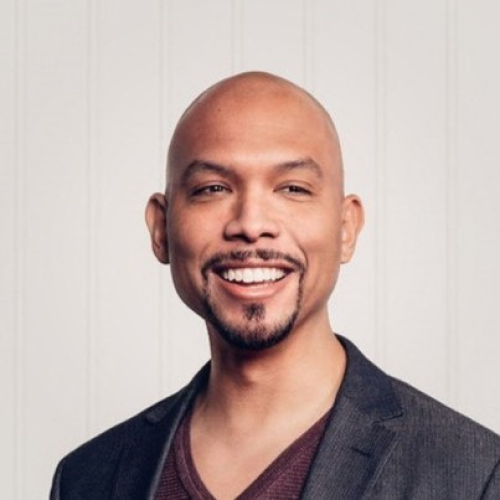
Over the course of his long engineering career, Nick Caldwell has risen in the ranks from an individual contributor to his current role as VP of Engineering at Twitter. But he points to the leap from engineering manager to director while at Microsoft as one of the thorniest transitions.
“I loved line-level EM management. Even though as a director I now had 30 people reporting to me, I did all of the things that you would as someone with a much smaller team. I got to know everyone individually and motivated and inspired people on a one-to-one basis. All the things that are great about being an EM, I tried to carry into my role as a director, and I was having trouble scaling,” he says.
It got the attention of his manager at the time, who imparted some words of wisdom: You have to learn how to get off the floor. “What that meant was, if you think about the engineering team as a warehouse, you’ve got your line managers, and then you’ve got your directors. The directors have to be off the floor, overseeing multiple lines,” says Caldwell.
As a forcing function to delegate more effectively, Caldwell’s manager took drastic measures and stopped him from sitting directly with the team. Over time, Caldwell kept building up his director muscles instead of reverting back to his management comfort zone. “When you pop off the floor, you can see systemically how your teams are working together and understand where the bottlenecks are,” he says.
Listen to Nick Caldwell’s episode here.
3. Make the unpopular call to save the ship.
Our interview with Drop co-founder and CEO Steve El-Hage was so tactic-laden that it was hard to select just one to surface here. There’s the story of how El-Hage and his co-founders would stack a day with 80-90 candidate interviews. Or how he doesn’t make an exec role offer until he meets with more than 30 good people — a considerable challenge when you’re talking about C-level candidates. Or how he relied on three external advisors per function and met with them for around 20 hours a week for a year to get the very most out of their counsel.
But perhaps our favorite nugget of advice came not from these targeted examples, but from a big gutsy story. In recent years, Drop’s leadership team had concerns about the business model, even though revenue was doubling nicely,
For one of their business units that brought in the vast majority of revenue, KPIs were solid but unit economics weren’t improving. “We decided that we weren’t going to sell any third-party products at a discount anymore, because we saw it as a challenge to be able to survive long-term. We got out of 35 categories to focus on our own consumer electronics products, and that required parting ways with many people in the company,” says El-Hage.
The decision was unpopular to say the least, with users, investors and employees alike. “The short-term impact was horrible. The first three to six months our revenue shrunk 30% in the first quarter, and another 30% in the next quarter,” he says.
Sticking to his guns paid off. “By month six, our revenue started bouncing back and by month eight our revenue was where it was before. Our gross profit was high, if not higher. By month 10, we were profitable and EBITDA positive,” he says.
Many companies that go under, especially in consumer, know what they need to do. But it’s tough because you’ve got to change the panels on the ship while keeping it afloat.
Listen to Steve El-Hage’s episode here or read our full write-up on it here.
4. Dive seriously deep into the metrics.
Colin Bryar and Bill Carr spent a collective 28 years as executives at Amazon, so their recent book “Working Backwards” offers up plenty of behind-the-curtain stories and unique tactics — beyond Jeff Bezos' "two pizza rule” or the company’s memo writing culture that you’ve likely already heard about.
A favorite takeaway of ours came from one of Amazon’s 14 leadership principles: dive deep. "What separates an average from a great operator is that the best ones really dive into these metrics in great detail and tear them apart," says Carr. Bryar shares an example of just how deep Amazon leaders dive. "Take the annual planning process in 2010. The leadership team sets what they call S-team goals, which are important enough for them to monitor. There were 452 of them that year, and they were very, very detailed goals. How much selection are we going to add for this category? Are we going to bring down the latency of this AWS service, from X to Y? That was the level of detail that Bezos and his direct reports got to," he says.
Some may argue that this practice of diving deep into these input metrics' reedy waters borders on micromanagement. "As some organizations grow, the leaders think, 'My job is just to focus on the big picture.' At Amazon, leaders are expected to know what's happening with their business at an incredible level of detail. So deep diving isn't micromanaging — it's staying on top of the details of your business," says Bryar.
You can't get to a place where you don't know if your business was better this week than it was last week or this quarter over last quarter — otherwise, it will continue to get worse, undetected.
Listen to Colin Bryar’s and Bill Carr’s episode here or read our full write-up on it here.
5. Don’t skip over all the goodness when you’re joining a team.
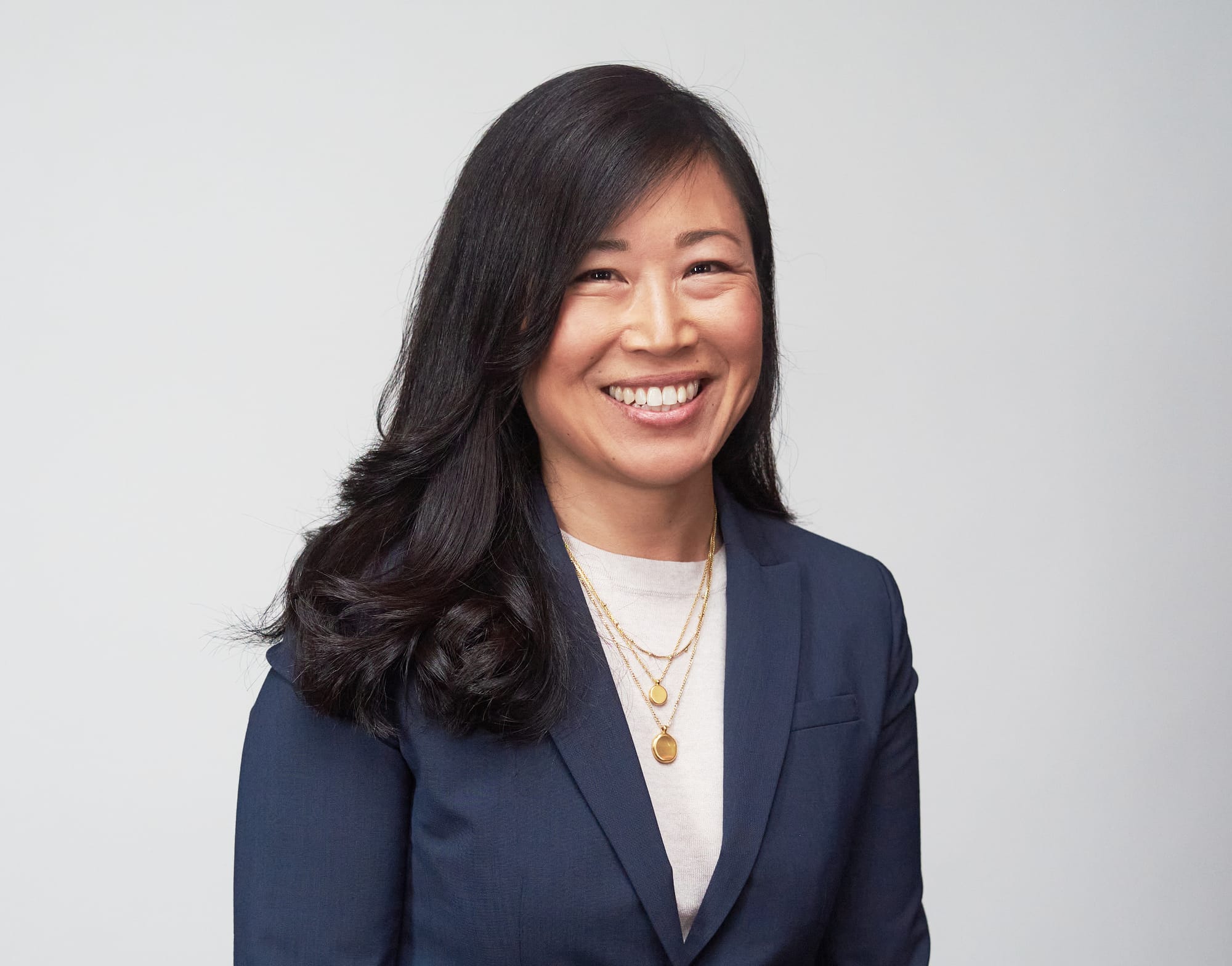
Anne Raimondi’s tech trajectory includes stops at some of the most interesting companies around — including leadership roles at eBay, SurveyMonkey, TaskRabbit, Zendesk, and Guru. She’s seen startups from every altitude — from PM to VP, from founder to board member, tackling consumer and enterprise challenges at every startup stage. Even her functional expertise is tough to pin down — she’s headed up product, marketing, revenue and operations.
Raimondi has tons of experience stepping in as an executive and plenty of words of wisdom to share for folks in similar shoes. A common misfire she sees from new execs itching to make an impact? Skipping over all the good and laser-focusing on what needs work. “You're joining an existing team, and every team has its strengths and its opportunities — some are going to be healthier than others. For many executives, you're brought in because there's something that needs improving on the team. There's some dynamic that needs improvement for that next leg of the journey. The bar needs to be set at a different level,” she says.
If the company leadership operates a transparent interview process, most of these challenges will have already surfaced. “If you're a C-level exec coming in, you're going to have already spent time with a CEO, as well as with board members. Through that process, oftentimes people are pretty open about sharing what the challenges are. The key is continuing to stay clear-headed and see some of it for yourself, too. The pitfall to avoid is essentially gossip. Starting with, ‘Well, I heard this about so-and-so’ — that's not helpful,” she says.
If you skip over all the goodness, you quickly lose trust or become known as the person who’s only seeing everything that’s broken.
6. Create cacophony in your symphony by hiring for credible confidence.
David Lieb arrived at Google in 2013 via acquisition of his photo-sharing startup, Bump. While he and his team went on to build Google Photos, which launched in 2015 and passed the 1 billion users mark in 2019, his start at the tech giant was a bit rocky.
An unexpected reorg had moved him into the Google Plus organization — which wasn’t as interested in the product he wanted to build. “I had to just stick to my guns and say, ‘No, I'm pretty sure this product is going to be a winner,’” says Lieb. This experience turned him into an advocate for what he describes as “deliberately hiring people who disagree with your vision or have different ideas.” (Of course, alignment on values and mission are non-negotiables.)
Here’s how Lieb looks to engineer some cacophony in his symphony when hiring: “I want to see confidence. I want them to have an opinion, a worldview about what things we should change to make our product or service successful,” he says. “But that confidence has to be credible confidence — and often you'll see one and not the other. And that's a danger zone for me,” he says.
“I hate to see people who are really confident about something, but it's not actually backed up by a credible set of learnings for me to believe that it's real. Also vice versa — I often see people who have a lot of learnings, but don't really know what they want to do with them or have a confident plan of what to build.” Here’s how Lieb approaches picking up on those signals in candidate interviews:
- What would you change? “Sometimes they're flummoxed by that question. They're like, ‘Whoa, I mean a lot of it's good.’ That means that they don't actually have strong opinions, which I think are less useful. So I put them in those hypothetical situations and I say, ‘Tell me what you would do. You're in charge.’”
- Why do you believe that? Why are you so confident about that? “The dangerous people to hire are the people who can't articulate why they're confident, but they're really confident,” he says. “So I just try to poke and keep going one level deeper. ‘Oh, you said you tried that in that product. What did you learn specifically that makes you feel that way?’ And you can kind of separate the bullshitters from the ones who actually have taken those learnings to heart.”
Listen to David Lieb’s episode here.
7. Be the gravity assist slingshot for your direct reports.
We’ve featured Russ Laraway’s sharp career conversation wisdom on The Review before, which is why we knew we had to have him as a guest on the podcast. And Laraway delivered the goods once again, walking us through his approach to OKRs and developing high-quality managers.
We particularly loved the Qualtrics leader’s succinct description of a manager’s job: 1) deliver an aligned result, and 2) enable the success of the people on your team. “Success has two distinct parts. One is short-term success, i.e. delivering the goals or the aligned result inside this organization this week, this quarter, or this year. But there's also long-term success — like thinking about my long-term career, which by the way, may not be at this company,” says Laraway.
“I think a lot of managers convince themselves that the person sitting across from them is an employee and our shared interest is about what we do here in this company today and tomorrow. And I think what I've learned is that the best managers say ‘No, no, no, that person sitting across from me is a human being, and I need to play a role in not only helping them achieve success as we define it within this company, but also whatever they envisioned for themselves over a much longer horizon in their career,” he says.
To further illustrate this point, Laraway relies on a trusty metaphor. “If you've ever seen a space movie, there's always a gravity assist launch out into the far reaches, as in ‘We don't have enough fuel to get to Mars, so we better do a slingshot around the Earth.’ I say to managers, that's your job here. You only have this human being for a very short period of time over the full span of their career. Your job — in addition to everything else — is to make sure you’re that gravity-assist slingshot that launches them out into the far reaches of their career.”
Listen to Russ Laraway’s episode here.
8. Ask to see the excitement before you green light a new project.
As an engineering leader, Tido Carriero has built out teams at Facebook, Dropbox and Segment, where he’s currently the Chief Product Officer. If we had to choose a favorite tidbit from the advice he shared, it’d be the simple milestone his teams have to hit before he’ll greenlight a new project.
“When we’re exploring some new greenfield space, often you have a quarter to go build some prototypes, build some mocks, do a bunch of research,” he says. “And what I really want to see at the end of that is 3-5 screenshots of customers you're talking with on Slack, or video or audio recordings with their permission.”
More specifically, Carriero is looking for “insane levels of excitement,” he says. “I want to see some kind of commitment to buy, or a, ‘Hey, this would save us three engineers worth of internal hours if this product existed.’ Or a screenshot of them asking you if it's going to be ready next week.”
The source material proving said excitement is a critical component. “Often the classic trap with product/market fit is that everyone is super polite about your idea and they’re like, ‘Oh yeah, that could be really interesting.’ But that doesn't count for anything.”
This may seem like a simple milestone, but Carriero’s found it to be a very effective one. “It’s a way to say, ‘Hey, we're not going to go nuts building a team of five, 10, 15 engineers until we really see this kind of crazy pull.’”
I've seen projects where 30, 40, 50 engineers got invested for six, nine, 12 months. And it never really took off because we never understood the problem so well that a customer could recite it back to us with extreme amounts of excitement.
Listen to Tido Carriero’s episode here.
9. Train your team on storytelling.
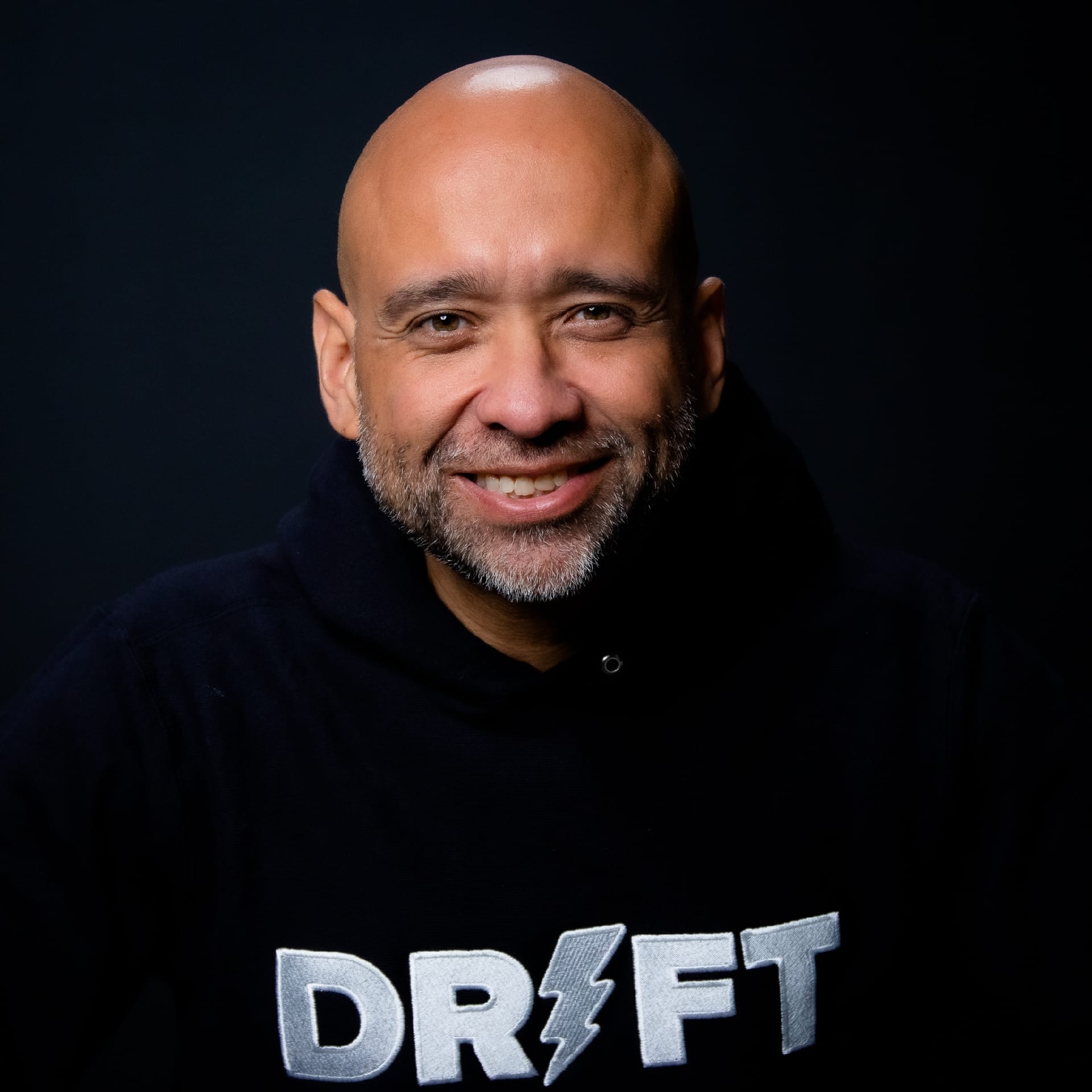
Drift co-founder and CEO David Cancel told us he’s particularly focused on one thing these days: “How can we do a better job at storytelling — not only the story itself, but the act of storytelling and training on that internally?” he says.
This work is the easiest for me and the organization to ignore. But it's the most powerful. Because when we have communication issues within the company or with our customers and prospects, it all comes back to the fact that we didn't spend enough time trying to understand the story.
“During onboarding, everyone — not just those in marketing — goes through training, not only on what our story is, but on how do you tell a story? How do you give a presentation? How do you write copy? What are cognitive biases? How do people make decisions?”
To illustrate what he means, Cancel walks us through an internal Drift course that breaks down the Amazon product detail page — which seems quite cluttered at first glance. “But if you start to look at it from how people make decisions, you'll see elements like the reviews and the photo and video uploads that hit you from a social bias standpoint of wanting to belong and be like others,” he says.
“And then there are people who want to make decisions immediately and they want everything right away. Things like, ‘We only have four more of these in stock,’ or, ‘If you buy now, we'll ship it to you by tomorrow at 1 PM’ trigger that,” says Cancel. (Trigger multiple biases at the same time is intentional — see what Charlie Munger once said about the Lollapalooza effect.)
Listen to David Cancel’s episode here or read our full write-up on it here.
10. Be a one-hit wonder.
“Code is easy. People are hard.” This simple truism from Credit Karma’s Colleen McCreary has stuck with us. To make managing the hard stuff easier, McCreary leans on what she calls the 3 C’s: clarity, context and consistency. “People will react not just to what they hear, but what they're actually seeing in practice. And so you have to provide the clarity of what you're trying to do. And then the context as to how you got to that decision. And then you have to do it over and over again,” she says.
“Early on, you have to focus on why you're here, what you're doing, and why it matters. CEOs basically have to be like one hit wonder pop stars. You have to keep singing the same song over and over. Because people don't remember, and you have new people joining who haven't heard you sing that song,” says McCreary.
“Founders, in particular, are always looking to move onto the next thing, but people don't come along the journey that quickly. So you have to slow down to be consistent, stay on message and tell employees how they're going to define success. Because if you don't focus on what really matters, people will hang their hat on an IPO or the stock price as being the determinant of success, and it's just hard to unwind.”
Listen to Colleen McCreary’s episode here.
11. Think of hiring as a segmentation exercise.

Prior to co-founding Persona in 2018, Rick Song spent five years at Square. As he recounted on the podcast, the 0 to 1 phase of company building brought forward many new lessons — particularly on the hiring front.
One early mistake that stands out is how they tried to create an entire loop for interviewing — complete with phone screens, interview problems and onsites — to make the startup seem more mature. “Coming from a large company like Square, often when candidates apply, there's a very high probability that they'll join you. But when you're a small startup, it's very different,” says Song.
Startup hiring isn't just about sussing out whether this person's qualified, but actually remembering that every single interview is also a sell.
His advice to perfect that sell? “Find out what’s uniquely attractive about your company. It doesn't have to be what's traditionally attractive — there will always be a segment of the market that is under-tapped,” says Song. “I try to think about hiring almost as an exercise of segmentation. Today it seems as if every startup is talking about hiring for mission, or how they’re going to become the largest company in the world. As a result, this ‘You're riding on a rocket ship’ segment of recruiting messaging is incredibly crowded. So we’ve taken almost the complete inverse approach. I often say to candidates something along the lines of:
- We're not trying to change the world, we're just hoping to make it slightly better. And hopefully if we succeed, people never think about their personal information being lost or mishandled ever again. Whether it's a rocket ship or not, I can't promise you that. I don't know where Persona will be in 10 years — if we are huge, that'd be absolutely amazing, and if we're still alive, frankly, that would also still be amazing. We're just trying to take it step by step, and make sure that this is a great place day-to-day for everyone here. As a founder, all I really try to index for is that 10 years down the line, if we were to go out and say, ‘Hey, there's going to be a reunion,’ we would all really look forward to seeing each other. And if that were true, I would think I've done a great job.
Listen to Rick Song’s episode here or read our full write-up on it here.
12. Take care not to copy-paste from Google.
McKenna Quint calls herself a glutton for punishment — she’s particularly attracted to startups that are in the messy, ambitious scaling phase of the company. Most recently, she was Head of People at Plaid, and also previously built and led the people team at self-driving car company Cruise Automation.
Over the course of her career in HR, she’s fielded questions from plenty of startup founders and has seen too many pull straight from the Google playbook without much rhyme or reason.
She sketches out an example. “I can't tell you the number of startup founders that I've talked to that say, ‘We have a five-point rating system on our performance reviews.’ And I'm like, why? Is your talent that differentiated? You have 50 people in your company, how are you rating them on a scale of one to five?” she says. “Be wary of what you copy-paste and think about the context under which Google built those things — don’t just emulate it because you think it’s how things should be done.”
Instead, whether it be performance reviews or a leveling system, Quint’s advice is to bias towards simplicity in the beginning: “If you’re a smaller company, keep it uncomplicated. Start with fewer levels — you can add more as time goes on, but it’s much harder to take them away,” she says.
Listen to McKenna Quint’s episode here.
13. Balance your inputs from evangelists and doubters.

When Irving Fain was exploring ideas for what would eventually become Bowery Farming, he met with plenty of folks who got his founder wheels turning in hyperdrive — including, as he tells it, swapping ideas for hours with a vertical farming evangelist over a plate of Buffalo wings.
While plenty of these explorative conversations energized Fain, he was eager to balance the scales. “You have to be really cautious of not falling victim to confirmation bias. While you're talking to people who are both excited and generally believe in what you're doing, it’s equally important to find people who don't believe in what you're doing, think you're taking the wrong path and ultimately think you're making a mistake going about this business,” says Fain.
It started with a subtle shift in framing. “The tack that I took with Bowery was not to believe this idea was possible and prove that belief wrong, but actually the opposite. I went from a base level assumption that this isn't possible and try to prove that wrong,” he says.
For every conversation diving deep with an evangelist, Fain reached out to a naysayer. “I spoke with a set of professors who had done a lot of research and felt that my idea was impossible, and I spent an equal amount of time talking with them to understand why they believed what they believed,” says Fain. “There should be hundreds of reasons why this can’t work — that’s fine. It doesn’t mean you don’t do it. But it’s better to know them ahead of time.”
Listen to Irving Fain’s episode here or read our full write-up on it here.
14. Throw out the script — even if it means turning down customers.
Jay Simons joined Atlassian back in 2008, and under his long tenure as president, the company grew from $20 million in AAR to about $2 billion today. In our conversation, he served up plenty of inside stories about the company’s unconventional moves and commitment to first principles thinking (which deserves considerably more column inches, in our view).
“It was really rare for us to just do something that works somewhere else. We always began culturally with the question around, ‘Why is it done that way?’” says Simons. This micro-example stands out as a prime illustration: Early on, the Atlassian team eschewed negotiations on things like warranties, indemnity clauses or payment terms. “We basically just said no — and it’s hard to say no to someone that wants to give you money,” says Simons.
The thinking was that Atlassian was charging so little for the product, and thus translating the savings of not keeping lawyers or salespeople on staff into cheaper software. “We’d say, ‘If it’s really important for you to negotiate your indemnity clause, probably one of our competitors will do that, but they’re going to charge you 10 times as much,’” says Simons. (Atlassian got to 50,000 customers without a single modified ULA, and was in business for eight years before hiring its first lawyer.)
I always remind people that there’s no business where you get 100% of the customers. You’re going to lose some for various reasons. We were comfortable early on losing customers that wanted different things than what we were going to offer.
Listen to Jay Simons’s episode here or read our full write-up on it here.
15. Manage by exception and get outside yourself.
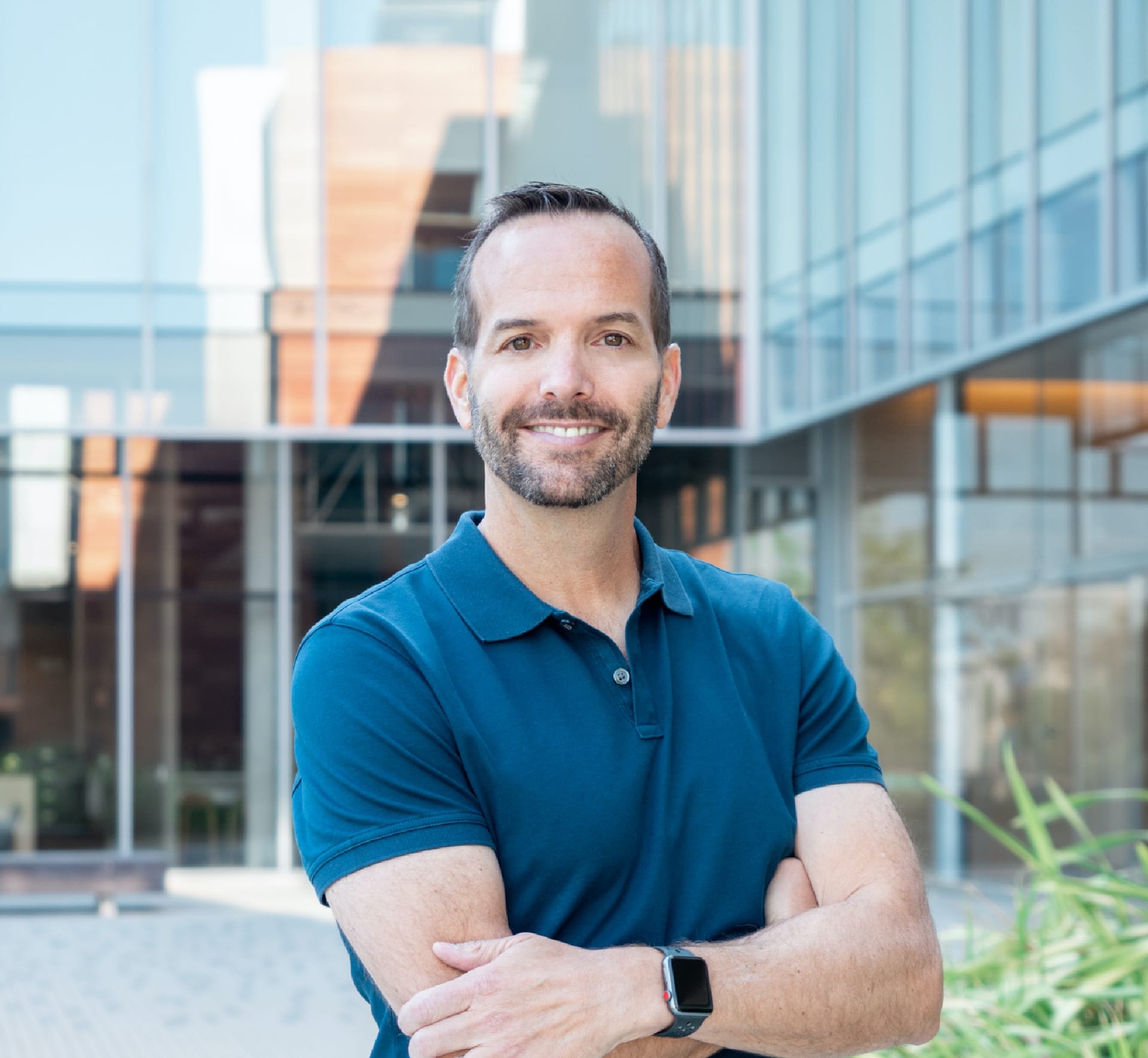
Dave Girouard graciously carved out time to stop by the podcast right on the heels of Upstart’s IPO, taking stock of their journey and sharing an inside look at everything from the founding idea, to fundraising struggles and tips for assembling an exec team.
One standout section was his musings on management. “My philosophy is management by exception. With Upstart, I've had this view that I'm trying to build this thing that's going to be around long after I'm gone. So I feel like decisions should be made as far down in the company as they can,” he says. “As CEO, if someone brings a problem to me, of course, I'm always anxious to solve it,” he says. “But I'm always going to think, 'How did this problem come to be? And how did it come to me? And should it have come to me?'”
Girouard notes that this requires disciplined management of your own behavior as well. “The best I can do is to try to always create some distance for myself so that I can be more of a neutral observer and prevent myself from doing things that might not be very helpful. It doesn't always work. Sometimes the emotion takes over, your instinct comes out, and you are who you are," he says. “The art of being a CEO is being able to get outside yourself and see yourself before it happens.”
Here’s his quick tip for forcing that external perspective: “Whenever I'm heading into a 1:1 with somebody, and I'm angry about something, I'll think about somebody who was my boss or mentor in the past, and I'd wonder how they would have handled this.”
I think every thoughtful leader can do their best to manage themselves first. If you really try to bring out the best in yourself, you'll realize that there's always an alternative approach to any situation.
Listen to Dave Girouard’s episode here or read our full write-up on it here.
16. Pay more attention to your systems.
As Chief of Staff at HashiCorp, Kevin Fishner’s mandate is to treat the company like a product. In addition to walking us through how they set and track goals, and make decisions through writing at HashiCorp, Fishner outlined a persuasive case for why you should care about your first 10 systems as much as you care about your first 10 hires.
As he rightly points out, so much startup advice focuses on hiring the best people. “While early employees help set implicit norms, building systems early in a company's lifecycle sets explicit norms. How do decisions get made? How are meetings structured? How are goals set? These systems are much easier to build when the company is small, and very challenging to put into place as the company grows,” he says.
“It’s like the Ship of Theseus thought experiment: Imagine you have a big wooden pirate ship and over 100 years, you replace each piece of wood. At the end of that process, is it still the same ship? There's no clear answer, but it’s instructive to think of a company similarly. Employees could come and go over the course of 30 years to the point where none of the same employees are there. Is it the same company?” he asks. “I would argue yes.”
A company is a collection of both its people and its systems. People can come and go over the years, but the systems they put in place and gradually refine over time become part of the company — and companies ultimately compete based on if those systems are strong or not.
Listen to Kevin Fishner’s episode here or read our full write-up on it here.
17. Assess job opportunities like an investor.
Before becoming a founder tackling 0 to 1 at his startup Anomalo, Elliot Shmukler had an incredible track record for picking high-growth companies — leading product and growth at Instacart, Wealthfront, LinkedIn and eBay.
“My process is to treat the decision like an investor. I am going to be investing my time in this company rather than investing my money as a venture capitalist might. And everyone’s time is pretty valuable. Is my next step going to be even more amazing because I spent time here?” he says.
And while plenty of candidates focus on evaluating if the role is a fit for their particular strengths or if a team is a good culture fit, Shmukler believes that not enough prospective candidates evaluate the company’s chance for being a breakout success.
“Picking a great company is a huge benefit to you and your career. The difference between picking the next $100 billion company versus the next $100 million company is massive. Of course financially, but also how people will see you as you think about your next opportunity,” he says. “Everything else being equal, they are much more likely to hire someone who’s been in the more successful place, because they feel like you’ve learned more about what a really successful company looks like.”
Here’s a few of the key areas he evaluates with an investor’s lens:
- Size of the market: Is the product niche, or is it something everyone could use?
- Execution: What’s the sense of urgency at the company?
- Barriers to entry: What’s the company’s moat, and how easy is it to defend from competitors?
- Revenue resiliency: Is this a product people buy once, or is there a consistent stream of purchases of the company’s product? Are there multiple revenue streams?
This is something I’ve picked up from poker: Your probability of winning a hand always depends on having multiple ways to win.
Listen to Elliot Shmukler’s episode here.
18. Invite customers to open the front door.

Notion’s Head of Customer Experience Kate Taylor shared plenty of thought-provoking ideas, from crafting tighter product feedback loops, to takeaways from pricing and packaging experiments. But we were most intrigued by the concept that she calls the “front door experience” for customers.
“It’s about customers coming into our living room, sitting down and having a conversation with us — how do we make it feel that easy to talk with us?” says Taylor. “That means putting in more ways to get in touch and hear more from people, not less,” she says.
Here’s why this approach stood out to us: Every company claims to be customer obsessed, but that doesn’t always ring true in reality. Traditional customer service thinking typically revolves around reducing average handle time. “Our customer service goal is not to get them to stop talking to us — it's actually to pivot the conversation around and learn more,” she says. Taylor relies on these questions to get more out of these customer conversations:
- Why are you asking about this?
- Tell me why that feature is important to you.
- Tell me more about your business and what you're hoping to accomplish
- Tell me more about your workflow that would cause you to ask this question.
Listen to Kate Taylor’s episode here or read our full write-up on it here.
19. Hire and train for empathy.
When spinning up a new people function, Lambda School’s Mark Frein has a singular focus. “How can leaders model empathy? How can leaders create places where their teams can feel like they're truly themselves?” he says
On the podcast, Frein shared two stellar tips for putting this into practice. Start off by hiring empathetic leaders in the first place — and pushing past a candidate’s practiced response to the ubiquitous “Tell me about a time you failed” interview question. “Some follow-ups that can really help you get a little bit deeper are: ‘Talk to me about how that impacted you. How did you feel?’” he says.
I find it relatively easy to see someone who has a pat story about a failure, but they don't really think it was a failure — watch out for when you ask them about their emotional journey and they can't talk about it with feeling.
Once managers are in the door, it’s important to practice those empathy skills — a focal point of any manager training Frein runs. “What I really do is focus on stopping them as soon as they want to judge. Because there are great managers who still cannot quite resist the urge to start diagnosing and fixing, a ‘Oh, I know exactly how to deal with this person, he needs to do XYZ,’ kind of response. But that’s trying to solve the problem before we even understand what the problem might be.”
This is where Frein pulls out a trusty metaphor. “A manager's ability to read emotions is a little bit like training yourself to be a sommelier. Is that anger? Is that just frustration? Through training, you're developing a little bit of a vocabulary and that vocabulary helps you step back, not judge, and listen before developing an action plan,” he says.
Listen to Mark Frein’s episode here or read our full write-up on it here.
20. Argue more and focus less on metrics when annual planning.
Jeff Lawson has spent the last 13 years building and running Twilio, including leading through a successful IPO in 2016. Lawson mined several fascinating stories from this journey on our podcast, but perhaps most intriguing was the “aha” moment after a newly-hired executive read the annual plan and noted that it wasn’t clear if the goals were must-dos, nice-to-haves, or just ideas.
This insight prompted a revelation. “As an executive team, we never actually argued — which is a strange thing to bother a CEO. But in fact, something always felt not quite right to me when we always agreed. Clearly, we must not be making good enough decisions if we all agree all the time,” he says.
Lawson realized the team wasn’t arguing because they weren’t prioritizing. “One person says, ‘I like idea A,’ and the other person says, ‘I like idea B,’ and you say, ‘Great, put them both down, we'll do it all!’” he says.
There’s another area of annual planning where prioritization issues pop up. “The thing that I've noticed about OKRs is the objectives aren't prioritized in most companies and the energy is really around the key results. Everybody gets very focused on the metrics,” says Lawson.
At Twilio, each team instead crafts what they call a BPM — which stands for big picture, priorities and measures. “I actually think the most important part of our BPM is not the measures, it's the priorities. The measures just are the markers that tell us if we're making the progress we want to make towards these priorities,” he says.
Metrics are, in my opinion, the least important part of an annual plan because they’re not very strategic. The metrics tell us if we're on the right path. But charting the right path is actually the hard work.
Listen to Jeff Lawson’s episode here or read our full write-up on it here.
21. Write a weekly digest to set the tone.

In taking on her current role as CEO of Abstract, Kelly Watkins joined the small club of marketing leaders sitting in the CEO seat. But the former VP of Global Marketing at Slack continues to lean on her marketing chops.
“A strong arc to my life is the power of story. Human beings are creatures that make sense of the world through narrative, and I’ve brought that skillset into being a CEO,” she says. To that end, a ritual she’s stuck to is writing a letter to the entire company every Friday. “Sometimes it’s about data that we’re seeing at Abstract and my interpretation of it. I’ve also written about imposter syndrome and how I try to tackle it in my own life,” says Watkins.
She’s found that it’s a critical tool for reinforcing narratives and stories that matter at Abstract. “One of the things I learned really early on as a leader is that internal narrative happens through repetition. What are our goals? What’s the purpose of the company? That repetition really matters,” she says.
She also notes the trickle-down effects in these weekly letters. “People might think the job of the CEO is to make a lot of decisions, but I see my job as setting the tone for the company. People look to leaders to gauge their own reactions in a situation. So if I’m running around like a headless chicken or my tone is on a really high frequency, people graft off of that,” she says. “So I’m constantly trying to have a tone of approachability and grace under pressure, because I think that filters out into the organization.”
Listen to Kelly Watkins’ episode here.
22. Snap up former founders.
In his role as VP of Product at Carbon Health, Ayo Omojola is fond of one particular saying that might seem a bit counterintuitive for a VP at a fast-growing startup: “I want to make myself obsolete.” Now plenty of people say they want to hire people smarter than them, but in our experience, very few actually do. Here’s how Omojola, a former founder and YC alum, has put this principle into practice.
“I look for founders who are in transition from their last company and figuring out what to do next,” he says. Here’s why: “I think founders that have not necessarily had these massive exits are really undervalued by the job market. You don’t have to worry about whether or not they can ship. You have available evidence and public artifacts of their work that you can try independently.”
Despite these clear advantages, he’s noticed that these folks are often viewed as riskier hires. “I had all these friends who were incredible founders, and they would go for interviews at Facebook, Google, or Amazon, and always get bounced out. My perception of the problem is that a lot of companies are looking for a very particular profile. But former founders have this incredible grab bag of skills that are more difficult to fit into a bucket for one specific role,” says Omojola.
But it’s not just companies that may be gun-shy about hiring former founders — the founders may be skeptical of joining a company where they’re not in the driver’s seat. “They’re in search of a mission and, as I did, they will have a chip on their shoulder and they’re going to want to build something new. I completely understand that they’re going to be flirty with ideas, and I want to support that,” he says.
Omojola sets the expectations early on in the interview process and — once hired — leaves space for the former founder to work their magic. “I state upfront the purpose that I’m hiring for and the type of thing we want to do with the role, but I also try to create an environment where they have maximum creativity and flexibility. All I ask is that they’re transparent with me about how and when they’re thinking about what’s next,” he says.
Listen to Ayo Omojola’s episode here or read our full write-up on it here.
23. Create tokens that align with your values.

As an engineering leader at fintech startup Plaid, Jean-Denis Grèze spends a lot of time thinking about motivating and aligning engineering teams. He’s found that at a fast-moving startup with an ever-long to-do list, it’s all too easy to get caught up in tackling the next big milestone, rather than celebrate the micro-moments that move the needle.
To build this habit, Grèze has seen time and time again that small gestures can have an outsized impact. “I’m a big believer in incentives that align with the culture and values. A funny one that people don’t realize can be super helpful is creating tokens — objects that you reward for a specific behavior," he says. “You can create a subculture around a new value. Humans — we love an object, we love a token.”
He pulls an example from a past team. “We had a model of the rocket ship from the Tintin cartoon. It’s this cool 1920’s or 30’s vision of a future spaceship, with a red-and-white checkered pattern. Every two weeks in our managers’ meeting, we’d share two highlights and two lowlights. Then we’d all vote and give that spaceship to the team that had the most impact,” he says. “There was a ton of pride in being awarded that spaceship as a team, and oddly enough, the spaceship took on a life of its own as a token. When a team was going to launch a new feature, they’d try to make a splash and drive impact so they could receive the spaceship,” says Grèze.
Listen to Jean-Denis Grèze’s episode here or read our full write-up on it here.
24. Double-click on your comms strategy.
Shannon Brayton is a veritable Silicon Valley veteran, with more than two decades of experience shaping corporate narratives and leading teams at companies like LinkedIn, OpenTable, eBay, and now Bessemer, as the venture capital firm’s first-ever CMO.
“Comms is one of the most under-appreciated functions inside of a company. For many years, it was sort of the stepchild to marketing,” says Brayton. “When people do comms really well, you almost don't know because it means they've killed a ton of stories along the way that people didn't want seen.”
On the other side of the ledger though, Brayton notes that a comms team is often quick to catch flack. “I don't love when people point to comms and say, ‘Well, it's a PR problem.’ People ask me all the time what I think of the Facebook comms team. My response is always that what Facebook has is not a comms problem — they have a business problem that the comms team is constantly trying to chase,” she says.
Aside from not giving the function its proper due, Brayton often sees another mistake from first-time founders. “When founders hit product/market fit, many automatically think they need corporate PR — stories about funding and themselves. They don't necessarily focus on what really drives the business, which is a consumer press story, or in a trade outlet if it's B2B,” she says.
“You've got to know your objective and if it's to get more users, the answer is not just a headline in whatever publication about ‘Look at me, we raised this money!’ You've actually got to tell the story of the company and what it does. And I don't think people are great at that,” says Brayton.
What are you doing? Who are you targeting? How do you make money? How do you tell that story in 10 minutes? The more that you can crystallize that story, the better your PR is going to land.
Listen to Shannon Brayton’s episode here.
25. Check your ego at the door.
Sam Taylor is a startup sales superstar. He’s currently Loom’s VP of Sales and Success, and previously served as Dropbox’s first enterprise sales rep, and Quip’s first sales leader. But what stuck out to us over the course of our conversation with Taylor is how his best sales tip can be widely applied across all sorts of disciplines. Wherever you sit in the org chart, remember the power of checking your ego and approaching with curiosity to unearth critical insights.
“There’s a lot of power in saying you don’t understand something. Being willing to ask the dumb questions like, ‘Hey, you mentioned X, Y, Z thing. I don’t know what that is, what does that mean?’ is incredibly powerful,” says Taylor. “I think the most successful salespeople ask those next-level questions in a way that feels genuinely curious versus just trying to check a box on the list of questions they walked in the door with.”
Listen to Sam Taylor’s episode here.
26. Consider your co-founders as carefully as your idea.

Pilot co-founder and CEO Waseem Daher brings tons of startup experience to the table as a three-time founder. But he also brings something even rarer — the same group of co-founders across all three startups. Before Pilot, Daher founded Ksplice and Zulip with his former MIT classmates, Jeff Arnold and Jessica McKellar.
After successful exits for the founding trio’s first two companies (via Oracle and Dropbox acquisitions), Daher was firm that he would only embark on another startup if his co-founders were also onboard. It meant that in the early days of Pilot, they were limited to not just finding a great idea to start building, but finding an idea that all three were excited about.
“You may conclude after the first six months of working on the idea that the idea’s wrong and that people don’t actually want this thing. Maybe there’s something adjacent you want to pursue instead. But what you’re left with, if you make that choice, is the team.”
People think that the startup is very much about the idea. But the idea in some ways is the most disposable or flexible part of the company.
Here’s his advice to other founders: “What are the likely causes of death for your company in the early days? One of the most likely ones is founder drama or founder tension and an inability for the founding team to work together. To actually be able to solve for that from the get-go I think is very valuable in increasing the probability of success of the company,” says Daher.
Listen to Waseem Daher’s episode here.
27. Respect the pause.
As the SVP of HR at open-source software company Elastic, Leah Sutton is tasked with leading employee experience for the company’s 2,000 employees, spread across 40 countries. In working across several different cultures, Sutton has found that there’s plenty of potholes that can throw people off course.
“We had a session on power and privilege, and one of our engineering leaders said, ‘I encourage people to respect the pause. Because in my mind I’m formulating what I’m going to say in my native language and then I have to translate it to English, so it might take me a moment. When I pause, it’s not that I don’t have something important to say, I just need a little bit more time,’” recalls Sutton.
“Respect the pause” has since become a catchphrase at Elastic — and even at companies that don’t cross different cultures, it’s a poignant reminder for managers. “Be aware of how different folks on your team want to communicate. Give people time and call on folks that otherwise might stay quiet — they’ve got ideas to share, too,” she says.
Listen to Leah Sutton’s episode here.
28. Build for many, not for one.
Prior to joining Fauna as its CEO, Eric Berg served as Okta’s Chief Product Officer, scaling the company from 10 employees and zero customers to its IPO in 2017. In our conversation with Berg, he dove deep into the details of developing Okta’s ICP — which relied on relentless prioritization, and the painful act of saying no.
Here’s an example. “We had a very large social networking company come to us very interested in what we were doing. But their primary use case was probably 18-24 months down our roadmap. It wasn’t where the rest of our ICP was focused and where we felt we could get more scale from a go-to-market perspective. So we had to turn them down, which was very hard to do as a small company at the time,” says Berg.
When customer requests are too far off and you don't feel that they're representative of what you're seeing from a larger market perspective, then it doesn't make sense to make that trade off just for a big customer logo.
His advice? Rather than focus on one customer North Star, cast a wider net. “Very early on, there are going to be things that you’re going to build specifically for customers to get them live. But as long as you’re constantly interacting through your sales channel or marketing or customer advisory boards, you’ll get a good sense of what the larger representation of your ICP needs, and whether those specific features are aligned to that roadmap,” he says.
Listen to Eric Berg’s episode here.
29. Start at the bottom of your wishlist — and keep a good poker face.
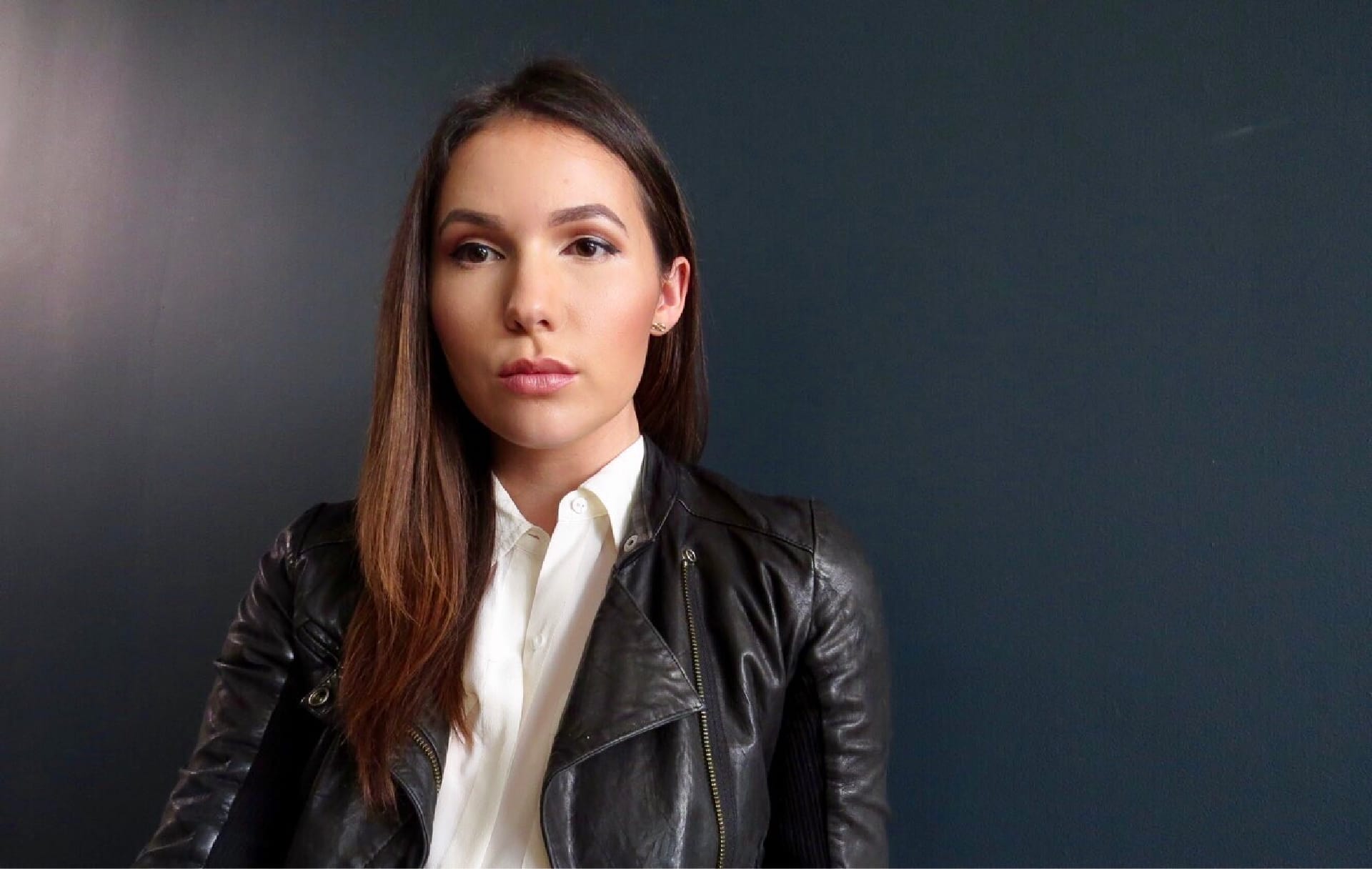
After a decade in partnerships (first at Stripe and now at Notion), Cristina Cordova has bagged big deals and honed her negotiation skills. On the podcast, she shared an inside look at this oft-overlooked role, from common traps and win-win tactics, to stories about deals that had an outsized impact or went sideways. We most appreciated how she immediately got down to the brass tacks of succeeding as a startup’s first BD or partnerships hire. Here are two quick highlights from what she shared:
- Start from the bottom. “Maybe you have some initial ideas for what partnerships would be effective for your organization, but you don't know if they’re the right ones — in a new function at a new company, you don't know the space very well,” says Cordova. “As you talk to the first few potential partners, you’ll find they don't really know your company very well. As a startup, they've never heard of you before and often have some hesitancy in building a relationship with you. That’s why my biggest advice is to start not with the most important partners that you could potentially work with, but third, fourth or fifth down on the list. Build a case with those folks before you go to your most prominent potential partner in a given space. That way you can really learn exactly what the objections might be and figure out the parts that they liked or didn’t like, iterating before you move on to bigger and bigger partners.”
- Make sure your team feels excited about the partner. “No matter how bad a deal might be going or how stressful the negotiation might be for you as a BD person, your job is to maintain a good face internally when it comes to the partner. You don't want your internal team —whether that’s engineering, product, other BD people, or finance — to be adversarial in the process with the other counterparts.”
Listen to Cristina Cordova’s episode here.
30. Stick to your priorities by auditing your calendar.
As the founder and CEO of Thumbtack, there’s a seemingly endless list of demands on Marco Zappacosta’s time. Over the past ten years building Thumbtack as a first-time founder, he’s leaned on a particular ritual to keep his head above water.
He starts by explicitly listing his top priorities for the next six months and circulating that list with the leadership team — whether that be focusing on recruiting for a new executive, or getting close to the metal on an upcoming launch. “Anything that feels like an existential risk or key inhibitor of our long term success goes to the top of the list,” says Zappacosta.
Next, he uses that as a lens to audit his calendar. “I literally go through and tag things so I can look at the percent of day or week or month that goes towards various topics,” he says.
The calendar is the best way to audit if you’re actually investing in the areas that you want to be invested in.
It also means he can be clearer about when to say no. “It’s always a surprise when you look at your calendar and realize, ‘Woah, I’ve signed up for way too much. We’ve got to pare this down and start saying no.’ It’s one thing when you say yes to a request in the abstract, but once you see it on your calendar and the investment it requires, you can be smarter about your time,” says Zappacosta.
Listen to Marco Zappacosta’s episode here.
Cover image by Getty Images / saulgranda.
